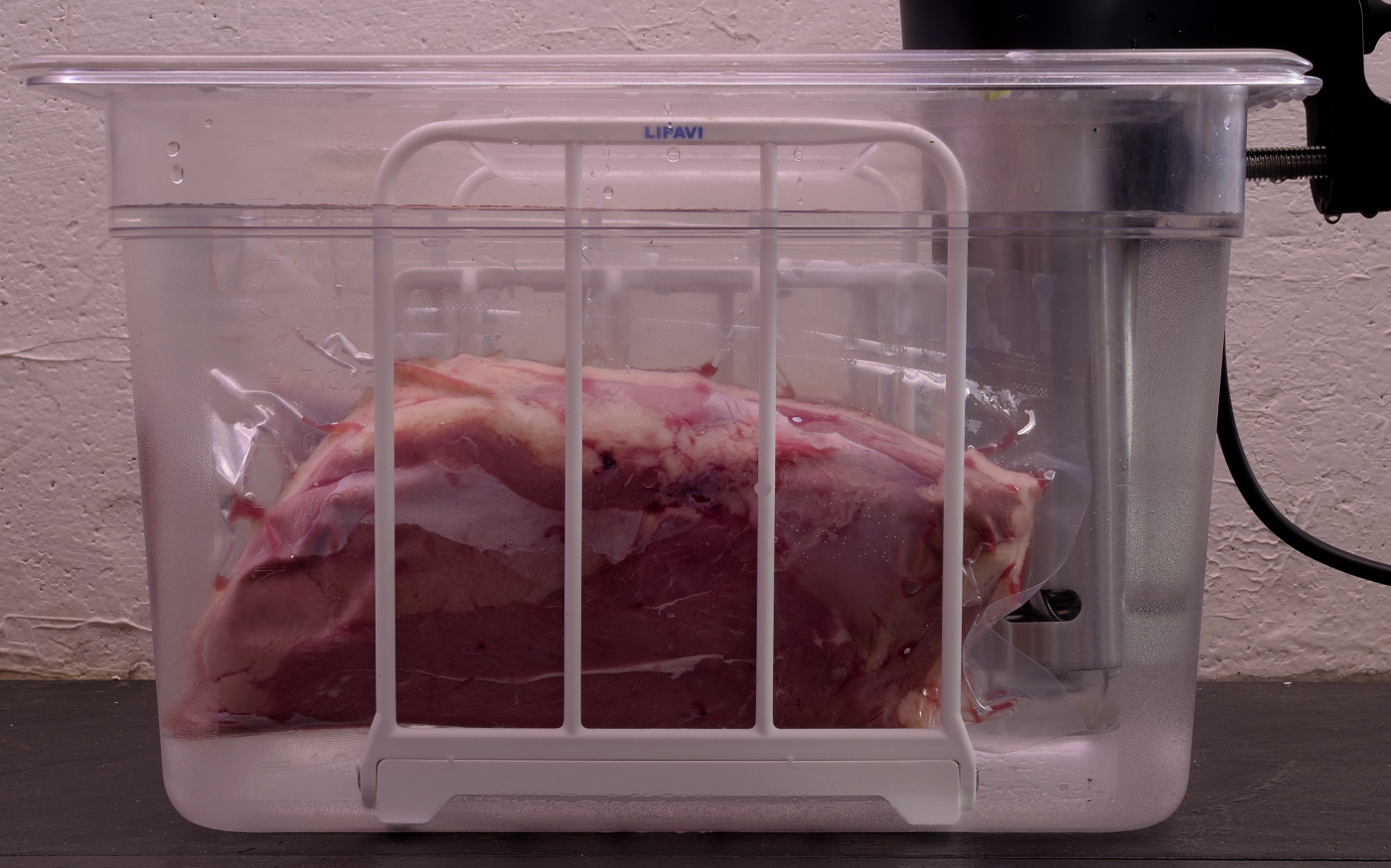Serves 3-4
Level of difficulty 2.5
Procedure:
Process at
130 F/54 C for 5 hours.
Remove the packages from the bath and shock in iced water until they achieve 70 F/21 C. Refrigerate at 40 F/4 C until day of service.
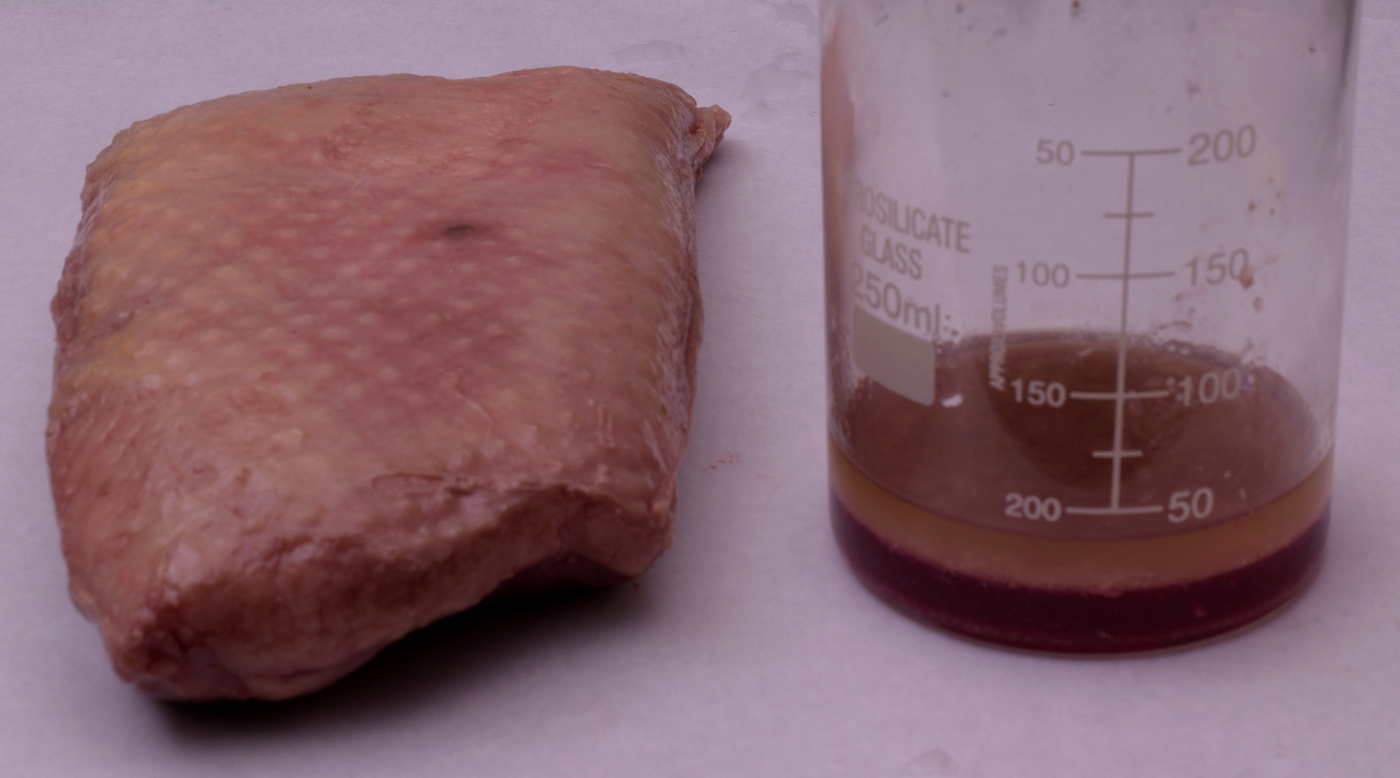
After processing, dry well. Harvest the juices and process as explained HERE.

Score as deeply as possible without actually cutting into the meat itself.
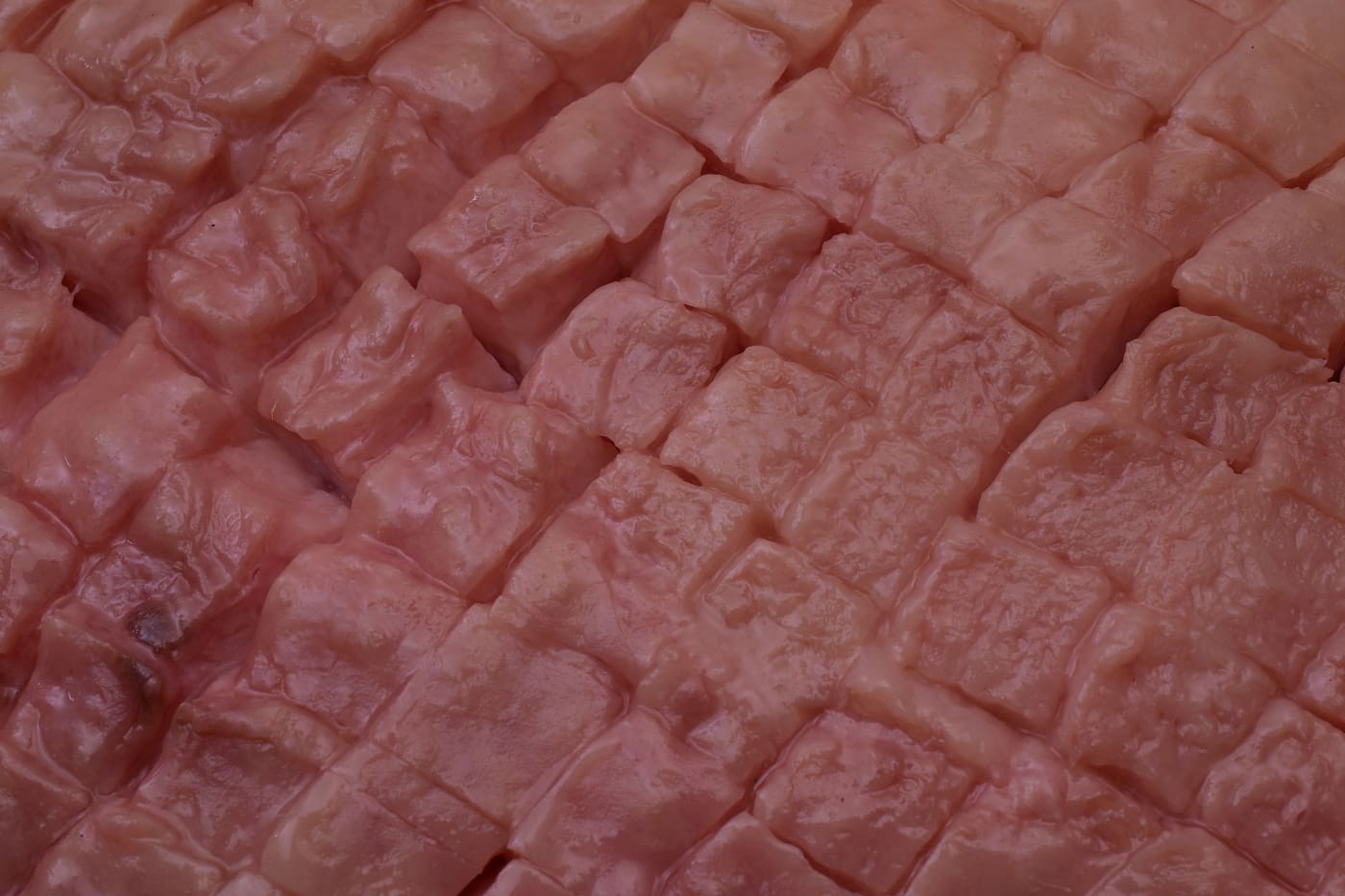
The deep cuts will facilitate the removal of as much fat as possible, which is the most common barrier to satisfactory results for this dish.
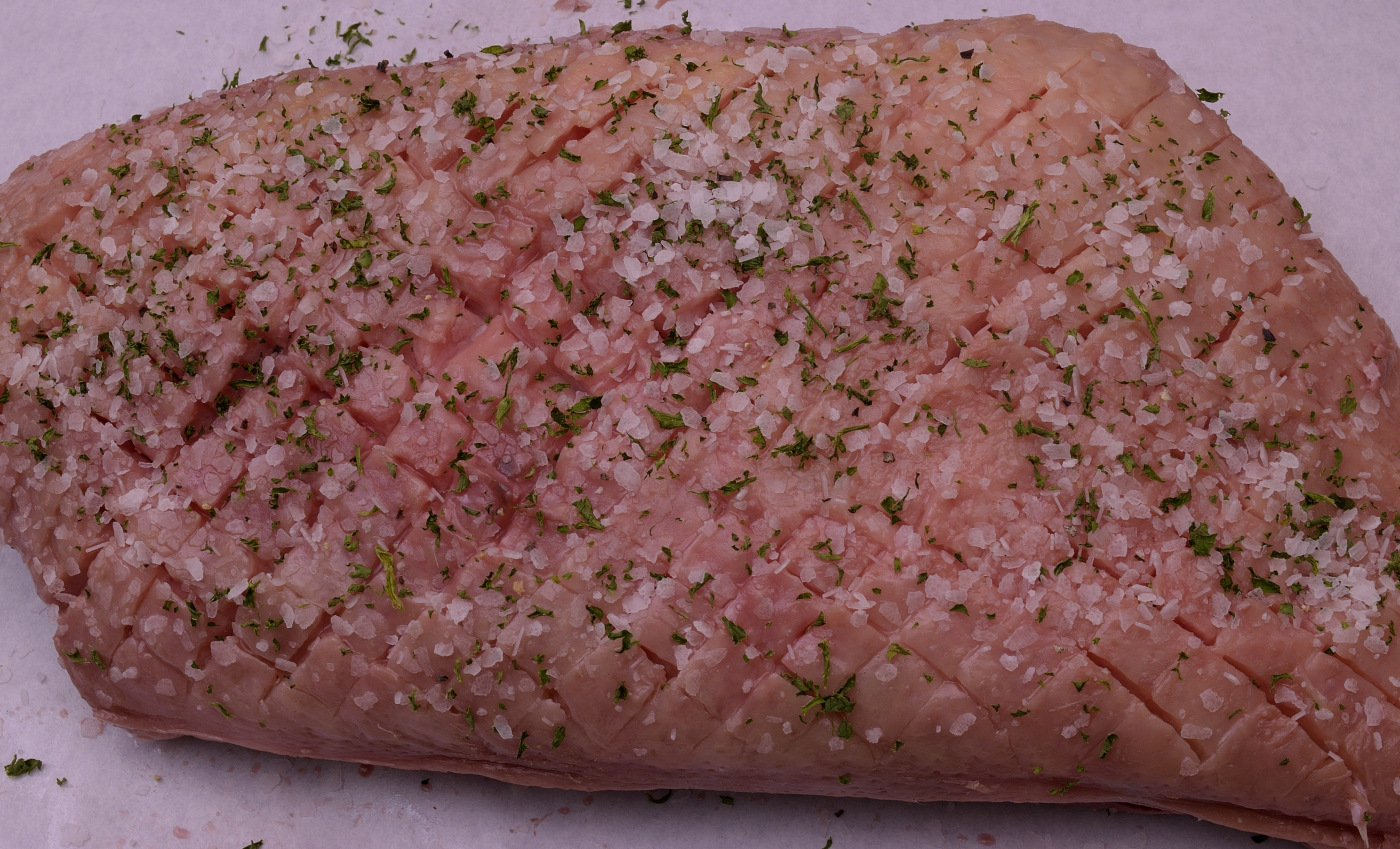
Season evenly.
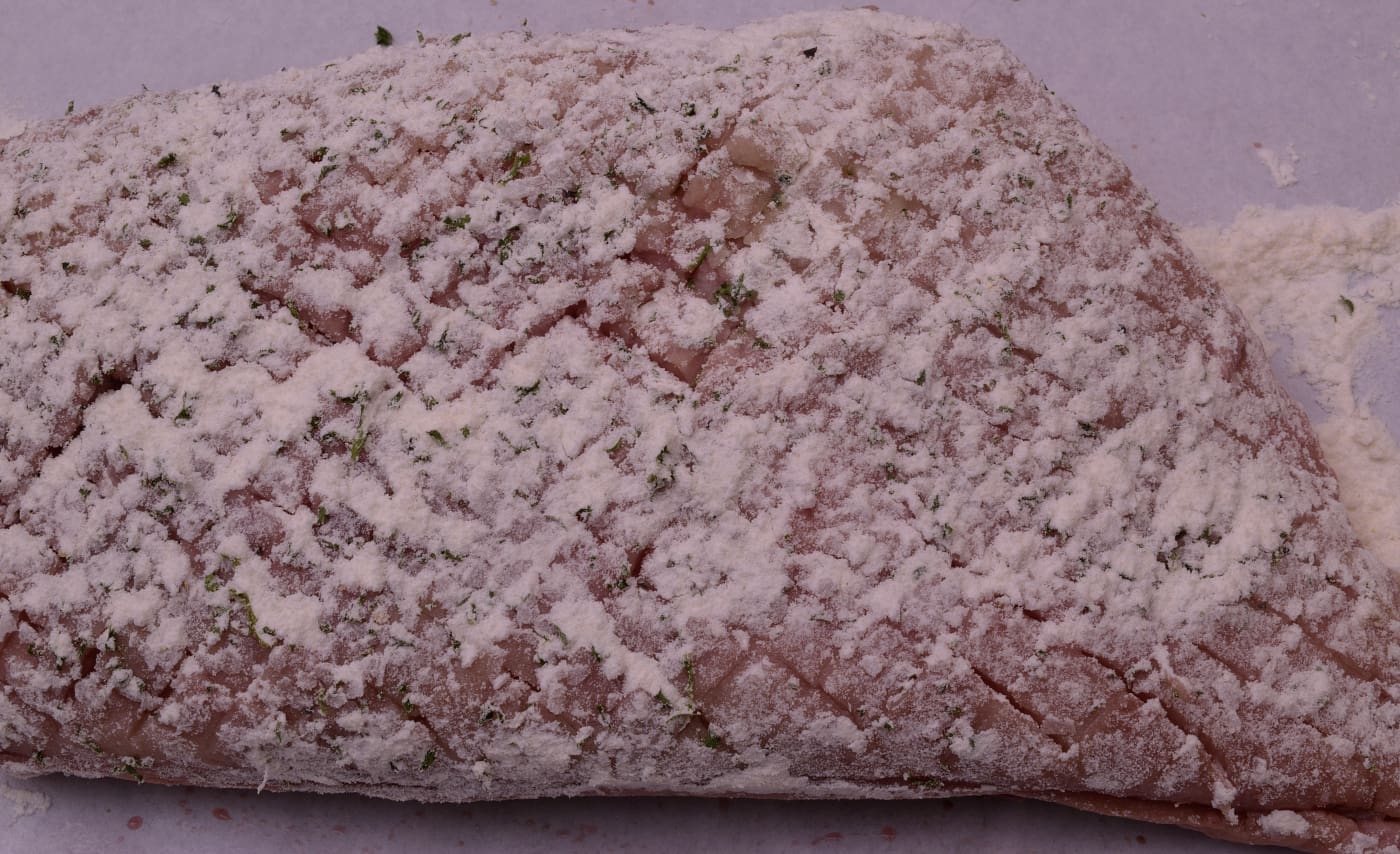
Sift/mix the flour with the baking soda and sprinkle or dredge the skin side in the flour mixture. Shake off the excess.
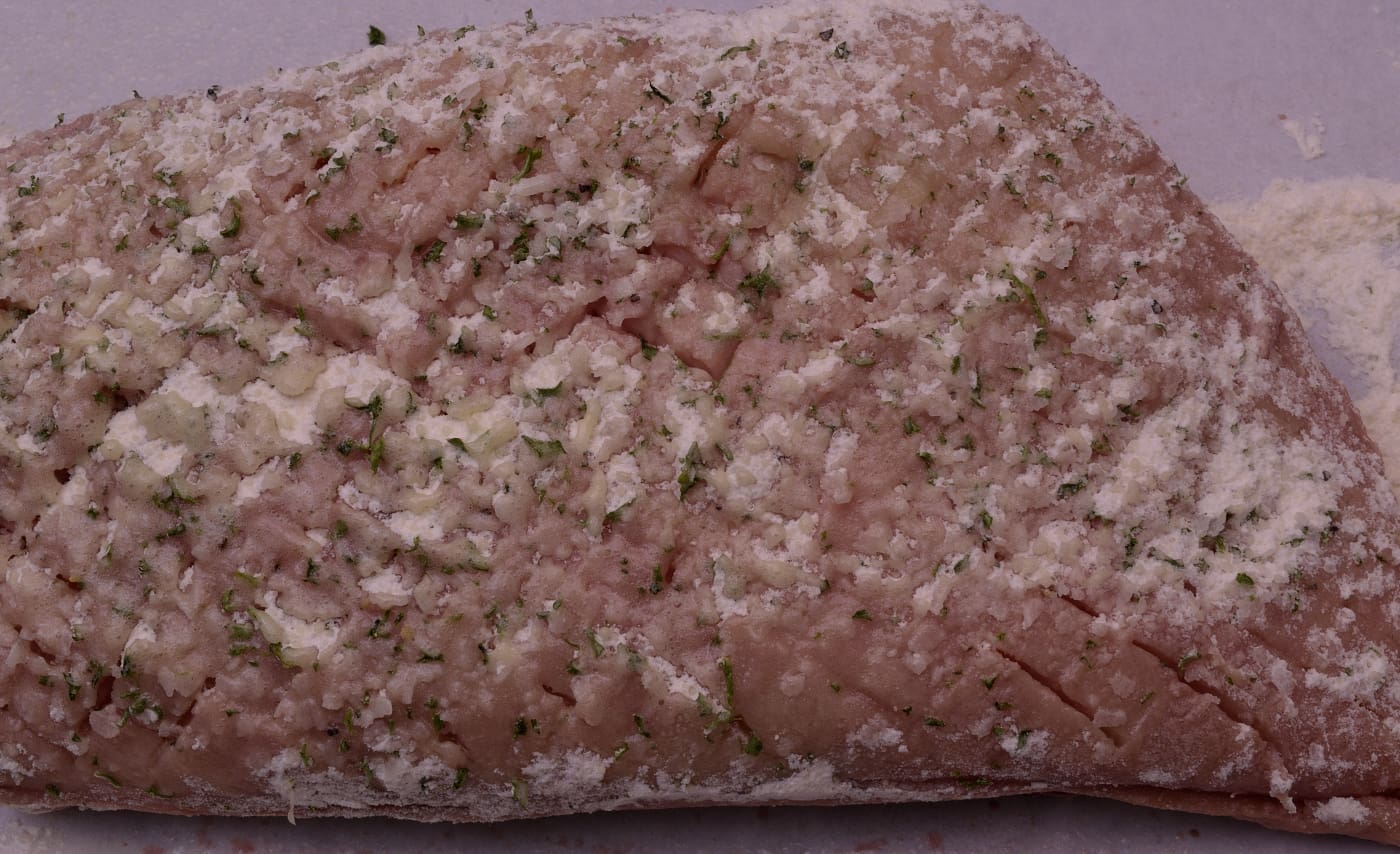
Spray/drizzle very lightly with oil.
Heat a thick bottomed 10″/225 cm skillet to 200 F/93 C. Rub with a paper towel dipped in oil. Lay the breast in the skillet and increase the heat to medium. The duck should sizzle, but not pop. Track the color as the skin darkens. Use a paper towel to blot excess oil if it accumulates in the pan during the process, which should take about 15 minutes.

The light pressure of a lid or plate helps keep the skin flat without squeezing out juice. Do not “press” on the weight. Once the skin achieves crispness and a dark, “steak-like” color, turn it over in the pan and TURN OFF THE HEAT. The flesh side does not require searing and doing so can dry out the breast–remember–the duck is not actually “raw,” but has been sous vide pasteurized.
Service
Remove the outer leaves from the Romaine lettuce and cut in half lengthwise. Sear in a cast iron grill (or saute pan) in a few drops of olive oil on one side for a few seconds until marks appear. Set aside.
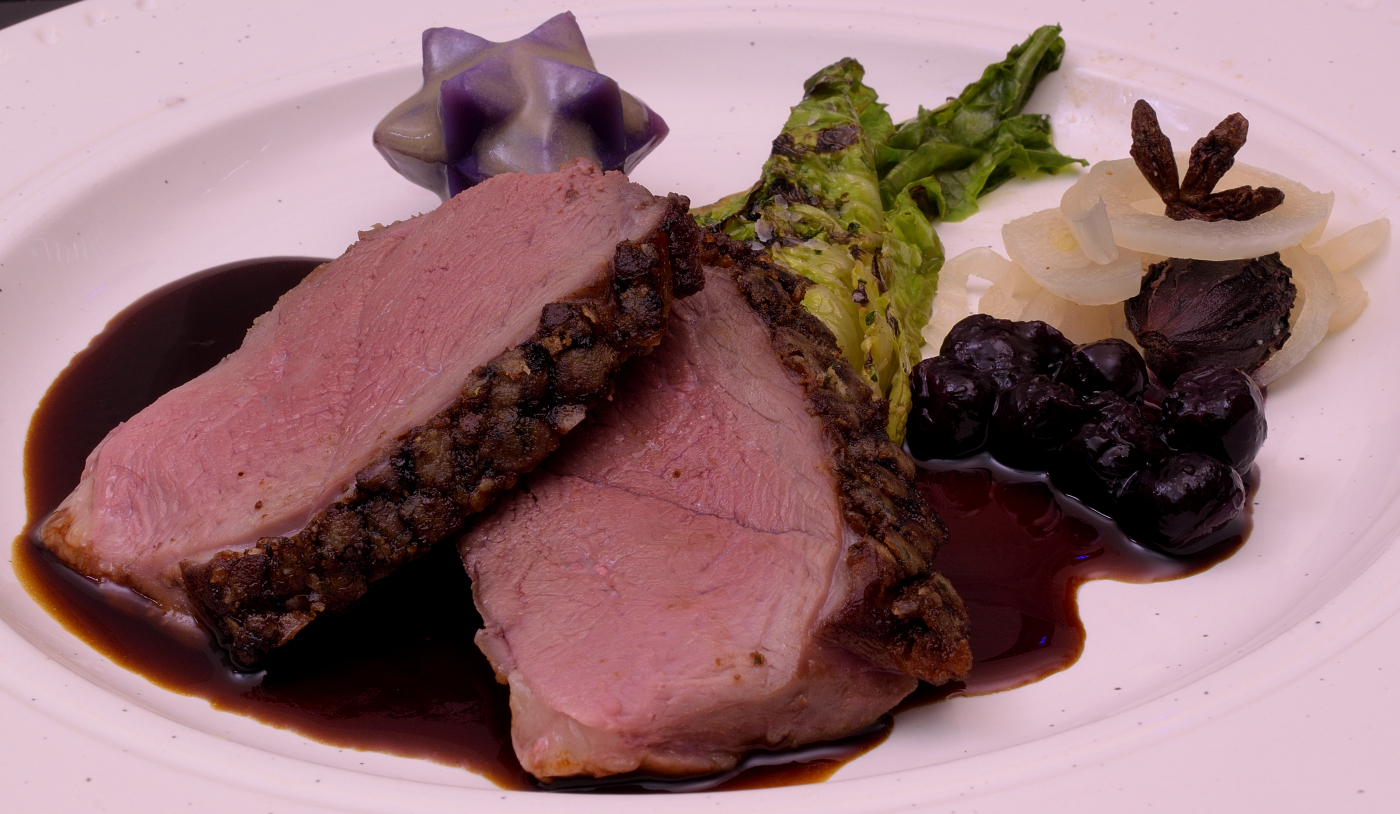
Arrange the potato, lettuce, onions and blueberries on the plate. Fold the pat of butter into the heated glace de viande and create a small pool on the plate.

Slice the breast on the bias and shingle from right to left, as pictured.

Visit HERE to learn how to create this shaped potato.

Sliced onions are simply blanched in a sweetened vinegar/water solution with cardamom and star anise.
Norm King
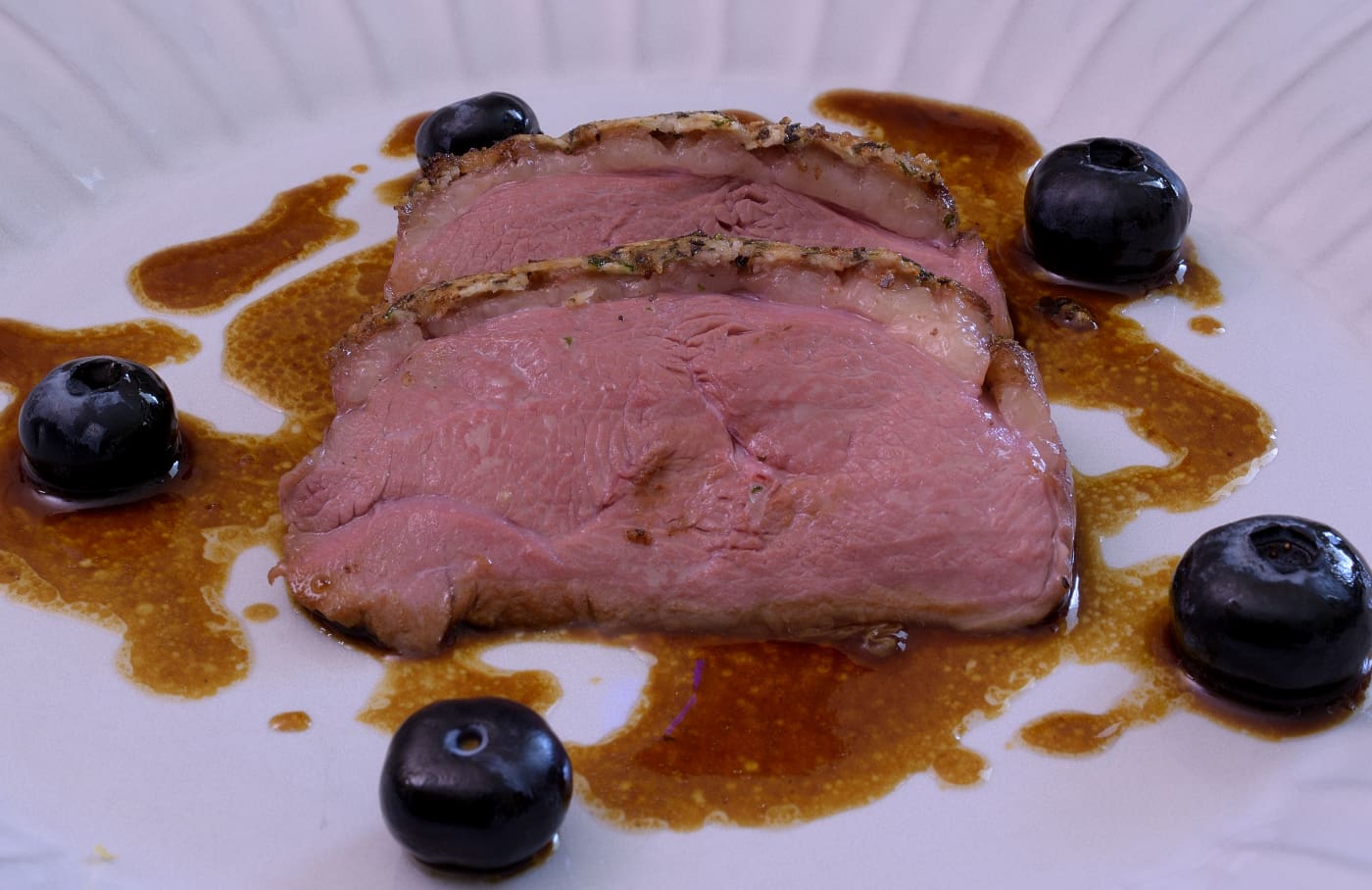
Above: a variation served with a Balsamic vinaigrette.

